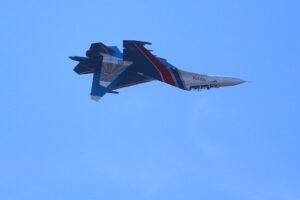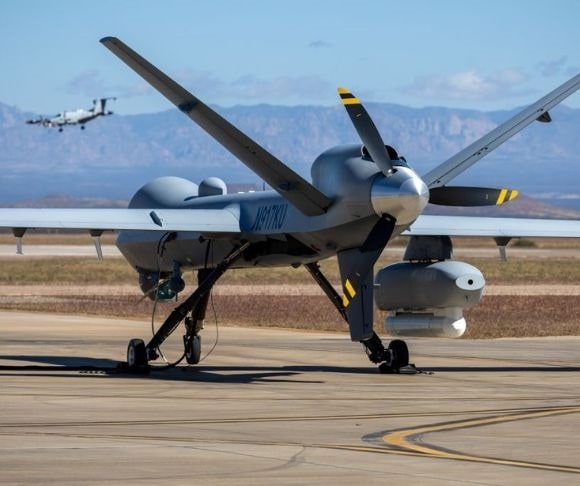During the Pentagon press briefing Tuesday, March 14, Brigadier General Patrick Ryder, spokesman for the Defense Department, reported on an incident between US and Russian aircraft. In an act characterized as “reckless and unprofessional” at 12:03 p.m. Eastern over the Black Sea in international waters, a Russian SU-27 with a NATO designation of “Flanker” ran into a US MQ-9 Reaper unmanned aerial vehicle (UAV). While the US does not have warships in the Black Sea, the US Air Force flies routine reconnaissance missions in the region. In addition, the war between Russia and Ukraine has increased the amount of air traffic over the Black Sea and around the fighting in Ukraine.
Russian Fighters
The SU-27s, in a flight of two, made several near fly-bys of the MQ-9. On a harassing near-miss pass, one of the Flankers jettisoned fuel on the Reaper. Then, in a display of incompetent flying, while trying to make another attacking fly-by of the US Intelligence, Surveillance, and Reconnaissance (ISR) aircraft, one of the Russian pilots ran his plane into the Reapers propeller. The US ISR aircraft was damaged beyond recovery and had to be ditched in the Black Sea.
Ryder, providing more details on the collision, explained:
“Several times before the collision, SU-27s dumped fuel on and flew in front of the MQ-9 in a reckless and unprofessional manner. This incident indicates a lack of competence in addition to being unsafe and unprofessional. US Air Forces in Europe Air Forces Africa routinely fly aircraft throughout Europe over Sovereign territory and throughout international airspace in coordination with applicable host nation and international laws.”
Ryder did not comment on whether the MQ-9 was armed. The commander of US Air Forces in Europe Air Forces Africa issued a statement that US and allied aircraft will continue to fly in international airspace and encouraged the Russians to pledge to fly professionally and safely. “We have been flying over that airspace consistently now for a year … and we’re going to continue to do that,” National Security Council spokesman John Kirby told reporters. Also, “The White House said there have been ‘other intercepts’ of US aircraft by Russian aircraft in the last few weeks, in addition to the collision that led to the downing of a US drone after it was hit by a Russian plane,” according to Mike Tobin, reporting for Fox News.
Turbulent Times
Reports from Moscow’s defense ministry attempted to deflect responsibility from the inept Russian pilots. The ministry claimed the MQ-9 made a “sharp maneuver” and went down into the Black Sea. “The Russian fighter did not use their onboard weapons, did not come into contact with the UAV, and returned safely to their home airfield,” the Kremlin said, according to Reuters.

SU-27 (Photo by Sergey Mihailicenko/Anadolu Agency/Getty Images)
The MQ-9 has a wingspan of 66 feet and a length of 36 feet. It can carry a payload of 3,000 pounds and cruises at 194 miles per hour. The aircraft does not make sharp maneuvers. The aircraft carries ISR sensors and video equipment and has an endurance of 14 hours with an operational altitude of 25,000 feet. A 900-horsepower turboprop engine powers the MQ-9.
If the SU-27, a supersonic Mach 2 fighter, engaged the slower Reaper, controlling the fighter could have been tricky not to stall the aircraft at altitude. Getting into the MQ-9’s engine propeller wash turbulences might have contributed to the jet striking the prop.
Asked if the US plans to recover the lost Reaper, Ryder declined to provide any information. Since the Turkish government closed the Bosphorus and Dardanelles Straits to warships in February 2022, mounting a significant recovery effort, as the US Navy typically would, is difficult. Nonetheless, recovering what might be left of the sensitive ISR equipment could be a priority, if only to keep it out of Russian hands.
The views expressed are those of the author and not of any other affiliation.




